#altered carbon season one
Text
Joel Kinnaman is really good at doing crazy eyes
#I mean#did you see the fight drome scene In altered carbon??#it’s fuckin perfect#Joel Kinnaman#actors#tv shows#altered carbon season one#altered carbon#netflix orignal series#Netflix#acting#crazy#crazy eyes
7 notes
·
View notes
Text
Finished the first season of Altered Carbon and honestly it was kinda mid. I loved some of the ideas they had, great sci-fi, truly. The blessings and curses of reincarnation via stacks and sleeves, the acknowledgement of the inherent disparity in the system via class warfare, inclusion and abuse and corruption of the neo-catholic church, all really good. It just isn't landing. I'm trying to figure out what it is that I don't... Love about it. Was it the "we got this crazy technology from an ancient precursor race that totally looked like the nearest cheapest dinosaur fossil our prop department could rent" and "the ultra rich people that have the only intact fossil of the 'ancient aliens' are too fucking stupid to realize that its totally a fucking dinosaur"? Was it that the main character is just the worst tsundere in every way? The unfeeling murderous killer suddenly becomes a normal guy again when he sees his sister, but that his sister can only be portrayed as a Femme Fatale and when she's a horrible person to save him and nothing happens to her character developmentally? I dunno. Maybe I'll steal some ideas from here if I ever run a stargrave or starfinder campaign or something but I don't think anything about this show is going to alter me and admittedly I am a little disappointed. I was hoping it would be a lot better than it was, ultimately.
#altered carbon#altered carbon season one#speakings#the list of movies i need to watch has grown to over 250 and its just overwhelming at this point#altered carbon is tv and watching it is technically slacking from the list so i feel both great and productive and lazy and procrastinating#its amazing
1 note
·
View note
Text
"do pets have souls" discussion is out,I want to know if my beloved 1899 (murdered by Netflix) will be in heaven
#I'm being silly no one start discussing souls in my notes i didn't get enough sleep for that#CLEARLY#1899#and#hannibal#altered carbon#Avenue five#i am not okay with this#who am I missing fellas there are so many#CHANCE#poor Hugh Laurie his penance for doing a 10-season show was to never star in a complete show again
10 notes
·
View notes
Text
Reading altered carbon after watching the netflix adaptation is so funny because i can't see bancroft as he is described on the book
To me, he looks like insanity as art.
It's james purefoy he's insanity as art

#oh yes#altered carbon#the book not the show#i dropped it mid season one lmao#but the visuals were really good#my nicknames for my favorite actors are always bangers#shawn ashmore for example i call mt. rushmore#because i couldn't remember his name to save my life#then it stuck
5 notes
·
View notes
Text
The Two Takeshi Kovacs - Altered Carbon Season 1
#altered carbon#takeshi kovacs#netflix#art#sci fi art#digital art#cyberpunk#sci fi tv#Richard K Morgan#laeta kalogridis#season one#immortality#joel kinnaman#streaming#animation#novel#broken angels#woken furies#sleeve#stacks#envoy#futurism#Spotify
7 notes
·
View notes
Text
Inupiaq Books
This post was inspired by learning about and daydreaming about visiting Birchbark Books, a Native-owned bookstore in Minneapolis, so there will be some links to buy the books they have on this list.
Starting Things Off with Two Inupiaq Poets
Joan Naviyuk Kane, whose available collections include:
Hyperboreal
Black Milk Carbon
The Cormorant Hunter's Wife
She also wrote Dark Traffic, but this site doesn't seem to carry any copies
Dg Nanouk Okpik, whose available collections include
Blood Snow
Corpse Whale
Fictionalized Accounts of Historical Events
A Line of Driftwood: the Ada Blackjack Story by Diane Glancy, also available at Birchwood Books, is a fictionalized account of Ada Blackjack's experience surviving the explorers she was working with on Wrangel Island, based on historical records and Blackjack's own diary.
Goodbye, My Island by Rie Muñoz is a historical fiction aimed at younger readers with little knowledge of the Inupiat about a little girl living on King Island. Reads a lot like an American Girl book in case anyone wants to relive that nostalgia
Blessing's Bead by Debby Dahl Edwardson is a Young Adult historical fiction novel about hardships faced by two generations of girls in the same family, 70 years apart. One reviewer pointed out that the second part of the book, set in the 1980s, is written in Village English, so that might be a new experience for some of you
Photography
Menadelook: and Inupiaq Teacher's Photographs of Alaska Village Life, 1907-1932 edited by Eileen Norbert is, exactly as the title suggests, a collection of documentary photographs depicting village life in early 20th century Alaska.
Nuvuk, the Northernmost: Altered Land, Altered Lives in Barrow, Alaska by David James Inulak Lume is another collection of documentary photographs published in 2013, with a focus on the wildlife and negative effects of climate change
Guidebooks (i only found one specifically Inupiaq)
Plants That We Eat/Nauriat Niģiñaqtuat: from the Traditional Wisdom of Iñupiat Elders of Northwest Alaska by Anore Jones is a guide to Alaskan vegetation that in Inupiat have subsisted on for generations upon generations with info on how to identify them and how they were traditionally used.
Anthropology
Kuuvangmiut Subsistence: Traditional Eskimo Life in the Latter Twentieth Century by Douglas B. Anderson et al details traditional lifestyles and subsistance customs of the Kobuk River Inupiat
Life at the Swift Water Place: Northwest Alaska at the Threshold of European Contact by Douglas D. Anderson and Wanni W. Anderson: a multidisciplinary study of a specific Kobuk River group, the Amilgaqtau Yaagmiut, at the very beginning of European and Asian trade.
Upside Down: Seasons Among the Nunamiut by Margaret B. Blackman is a collection of essays reflecting on almost 20 years of anthropological fieldwork focused on the Nunamiut of Anuktuvuk Pass: the traditional culture and the adaption to new technology.
Nonfiction
Firecracker Boys: H-Bombs, Inupiat Eskimos, and the Roots of the Environmental Movement by Dan O'Neill is about Project Chariot. In an attempt to find peaceful uses of wartime technology, Edward Teller planned to drop six nukes on the Inupiaq village of Point Hope, officially to build a harbor but it can't be ignored that the US government wanted to know the effects radiation had on humans and animals. The scope is wider than the Inupiat people involved and their resistance to the project, but as it is no small part of this lesser discussed moment of history, it only feels right to include this
Fifty Miles From Tomorrow: a Memoir of Alaska and the Real People by William L. Iģģiaģruk Hensley is an autobiography following the author's tradition upbringing, pursuit of an education, and his part in the Alaska Native Settlement Claims Act, where he and other Alaska Native activists had to teach themselves United States Law to best lobby the government for land and financial compensation as reparations for colonization.
Sadie Bower Neakok: An Iñupiaq Woman by Margaret B. Blackman is a biography of the titular Sadie Bower Neakok, a beloved public figure of Utqiagvik, former Barrow. Neakok grew up one of ten children of an Inupiaq woman named Asianggataq, and the first white settler to live in Utqiagvik/Barrow, Charles Bower. She used the out-of-state college education she received to aid her community as a teacher, a wellfare worker, and advocate who won the right for Native languages to be used in court when defendants couldn't speak English, and more.
Folktales and Oral Histories
Folktales of the Riverine and Costal Iñupiat/Unipchallu Uqaqtuallu Kuungmiuñļu Taģiuģmiuñļu edited by Wanni W. Anderson and Ruth Tatqaviñ Sampson, transcribed by Angeline Ipiiļik Newlin and translated by Michael Qakiq Atorak is a collection of eleven Inupiaq folktales in English and the original Inupiaq.
The Dall Sheep Dinner Guest: Iñupiaq Narratives of Northwest Alaska by Wanni W. Anderson is a collection of Kobuk River Inupiaq folktales and oral histories collected from Inupiat storytellers and accompanied by Anderson's own essays explaining cultural context. Unlike the other two collections of traditional stories mentioned on this list, this one is only written in English.
Ugiuvangmiut Quliapyuit/King Island Tales: Eskimo Historu and Legends from Bering Strait compiled and edited by Lawrence D. Kaplan, collected by Gertrude Analoak, Margaret Seeganna, and Mary Alexander, and translated and transcribed by Gertrude Analoak and Margaret Seeganna is another collection of folktales and oral history. Focusing on the Ugiuvangmiut, this one also contains introductions to provide cultural context and stories written in both english and the original Inupiaq.
The Winter Walk by Loretta Outwater Cox is an oral history about a pregnant widow journeying home with her two children having to survive the harsh winter the entire way. This is often recommended with a similar book detailing Athabascan survival called Two Old Women.
Dictionaries and Language Books
Iñupiat Eskimo Dictionary by Donald H. Webster and Wilfred Zibell, with illustrations by Thelma A. Webster, is an older Inupiaq to English dictionary. It predates the standardization of Inupiaq spelling, uses some outdated and even offensive language that was considered correct at the time of its publication, and the free pdf provided by UAF seems to be missing some pages. In spite of this it is still a useful resource. The words are organized by subject matter rather than alphabetically, each entry indicating if it's specific to any one dialect, and the illustrations are quite charming.
Let's Learn Eskimo by Donald H. Webster with illustrations by Thelma A. Webster makes a great companion to the Iñupiat Eskimo Dictionary, going over grammar and sentence structure rather than translations. The tables of pronouns are especially helpful in my opinion.
Ilisaqativut.org also has some helpful tools and materials and recommendations for learning the Inupiat language with links to buy physical books, download free pdfs, and look through searchable online versions
142 notes
·
View notes
Text
Oh let me meditate on the beast of devouring that feeds on the stars, that star devourer dragon Let me repel this Star dragon and banish it from the light of my Sun
- Ancient Sunfire chant, Tales of Xadia
I'm thinking about the sun and the stars and how Laurelion is, probably, both.
(Reposted because I’m a damn fool!!)
The Big Bang, in real life
The majority of atoms which make up us, our earth, and even our very own sun, were formed in the hearts of the very first stars in the universe.
These stars were made of lighter elements, mostly Hydrogen, Helium, and Lithium. But under the immense pressure at the core of those first stars, heavier atoms like Carbon, Oxygen and Nitrogen were formed. The stars eventually died - exploded - and released those heavier elements into the universe to be crafted into other forms.
As Carl Sagan famously put it, "We are made of star stuff."
And so Aaravos's quote in the teaser for season six - We are, all of us, stardust - is a blatant nod to the Sagan quote as well as, I am assuming, that aspect of the universe in some shape or form. Allegorically, it speaks to the idea of the universality of existence in the basest sense. But also, it acknowledges that the stars, like everything else, operate generationally.
So in this way, if we are to assume the TDP cosmos operates at least somewhat similar to our own, Xadia's sun is a younger (but still old as balls) star, from a different generation than the stars which are far more distant and ancient.
(As a side note, the very first stars in the universe did not last very long. Though certain stars in existence right now have "lifetimes" which are projected to last longer than the universe has currently been in existence.)
So if Xadia's sun is technically a star, even by Xadia's own admission (see Sunfire chant), then by this metric I have to ask...
What makes the Sun arcanum different from the Star arcanum?
While those first, most ancient of stars produced the materials which would become life, only a sun can sustain life and is therefore inextricably linked with the earth and all the life on it. It's this connection which I imagine is responsible for the change in the nature of the magic.
In Callum's Spellbook, Callum makes some word-association lists for the different types of magic. He associates "truth" with both Sun and Star (perhaps a trait of their shared stardom). No other words match up completely, but it feels like they are referencing similar things within different contexts.
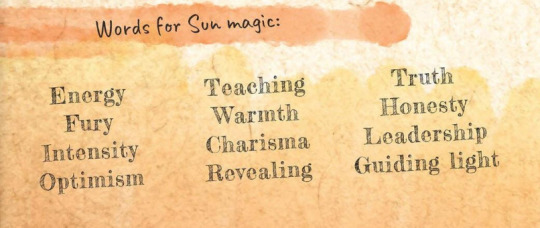
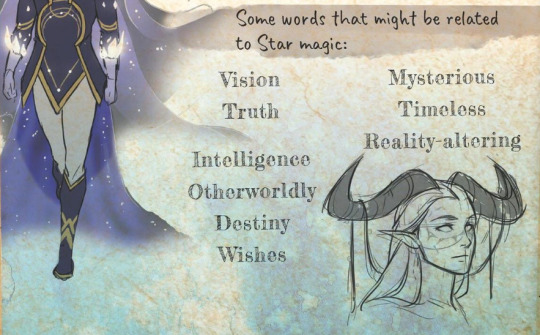
The Sun teaches while the Stars are simply intelligent; the Sun is a "guiding light" while the Stars are associated with "destiny." Further, many of the other words Callum associates with the sun are about being in positive community with others (optimism, warmth, charisma, leadership). The nature of the sun is more giving, nurturing, and dare I say loving than that of your average star. Sun is revealing and honesty, Star is mysterious and reality-altering. Further, there is a dynamism in the words for Sun Magic that is absent from Star Magic - sharing knowledge vs simply having knowledge, guiding vs prescribing a set path.
(Another side note: Callum also mentions that Star mages are born, which, Callum's limited understanding aside, is perhaps a hint about what it will take to connect to the Star Arcanum. I have thoughts, but.... I'll just leave that there, winky face)
Obviously, these word associations can only go so far. Some of the most hostile and arrogant (eh eh!!) figures we've met have been Sun-aligned. But it does make me wonder about the beginning of Sun magic and what that introduction may have looked like.
Ever wonder what those sparkly dots are up there?*
Okay, so big question for me. Is Aaravos a star, like, literally a personification of a ball of gas burning billions of miles away, or is he just like, a very special elf? The same goes for all Startouch elves.
Zubeia refers to Aaravos as both a star and as an elf, and it's one of those things which I can't decide is real or simply a more poetic way of speaking of him. Is "Startouch elf" simply another type of star? Official art also sometimes depicts him and others as constellations. Are they the formed consciousness of a collection stars?
But it also makes me think of how often Sunfire elves personify the sun/the sun orb.
JANAI: You are a student of history, yes? Do you know where the Great Orb of the Sunforge came from?
KARIM: Legends say it was a gift from the Sun herself. The gift of a millenium. - "The Drakewood," S4E6
In "The Queen's Mercy," we have...
Aditi nodded. “[...]and so, as the Sun’s daughter, I will lead you into her embrace.”
...and earlier, there is this:
Queen Aditi the Merciful, they called her.
Queen Aditi the Kind.
The Light of the Sun Incarnate.
Kim’dael had thought it all an insufferable exaggeration. Sunfire elves gilded everything they could touch, of course they would do the same to their beloved leader.
Karim personifies the corrupted sun orb in "After Darkness":
He could still see it: the top of the Sunforge Tower, upside-down from where he lay, shrouded in inky corruption. It looked ill, its sickness weeping red and crowning the spire in a haze of blood.
[...]
We will come back, he promised his beloved, tainted city, his lost home. We will not abandon you. The orb pulsed mutely, a cry for help he could not answer.
TDP uses personification a lot, so it is kind of hard to parse out when it's being literal and when it's being lyrical. Perhaps in the examples cited it's simply the ostentatious way of the Sunfire elves like Kim'dael thinks. But if Aaravos, a known person, can be a star, then I can easily reason vice versa.
In the Book 1 novelization, Aaravos refers to himself as "of the First Elves." And if that is true, it follows that there must have been "Second Elves."
So who is Laurelion?
The significance of the laurel in the Western canon goes back to the myth of Daphne and Apollo.
There are various versions of the story, but essentially, Apollo (popularly associated with the sun), falls helplessly in love with Daphne. Though her reasons vary in different iterations, Daphne turns away from Apollo's affections. She runs and Apollo pursues. Just as Apollo is about to catch her, she begs for help - sometimes from her father, a river god, and sometimes from her mother, a nymph or Gaia - and she is saved by being turned into the laurel tree. In Ovid's Metamorphosis, when Apollo reaches Daphne post-transfiguration, he can still feel her heart beating below the bark. From that point on, the laurel wreath was associated with Apollo, achievement, and victory.
Gold, the element, takes the symbol Au from its Latin word, Aurum, which has etymological ties to 'aurora' (dawn). Names likes Aurelio or Aurelius similarly mean "golden" or "guilded."
So, taken together, I of course think immediately of this:
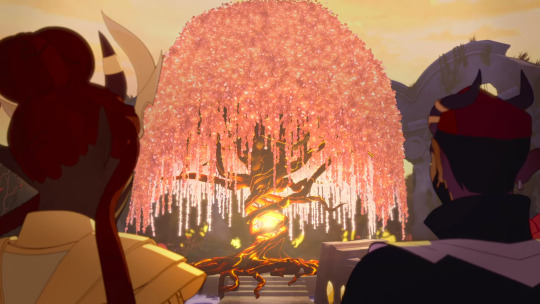
THAT BEING SAID, this looks more like a weeping willow or a wisteria than it does a laurel, which has bushy foliage rather than hanging. The closest I can maybe get is a mountain laurel, which does have blooms that hang kinda sorta like a wisteria, though not nearly in such a dramatic fashion. But anyway!
The golden laurel...⋆。°✩Laurelion✩°。⋆
Interestingly, in Ovid's retelling of Apollo and Daphne, Apollo's love is the result of being struck by Cupid's golden arrow, while Daphne's disgust of Apollo's advances are the result of being struck by a lead-tipped arrow. And so, there is an association there with gold and love. And within the context of the myth - Cupid is getting petty revenge on Apollo after Apollo is boastful and arrogant about his own prowess with a bow and arrow - it's also an instance of weaponizing love.
Which brings us to that which is known everforth as...
The Nova Blade
It is actually quite common for stars to have companions and to exist in what is called a binary star system. In this system, two stars are gravitationally locked in orbit and can appear as a single object when observed by the naked eye. Sometimes, the proximity between these two stars results in what is called a nova - a sudden brightness which appears to be a new star. Novas are not associated with stellar "death" (you'd be thinking of supernova, in that case).
Now in our universe, novas are not actually stars. They are events, momentary bursts of brightness under specific circumstances between two stars. But the name "nova" originally came from the term "stella nova" which means new star.
…and though undying, took last breath, immortal Laurelion was no more.
- "The Death of the Immortal"
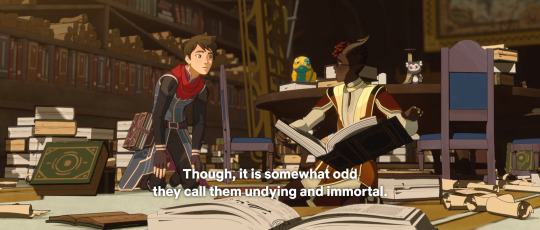
Did Laurelion just...die? You know, it was really unclear...
I do not think the Nova Blade killed Laurelion in the moment described in the poem. Kazi is so doubtful and Callum is so sure - Callum you fool! - surely that would be too easy (quote quote easy)?
I will grant that "Supernova Blade" would sound kind of hokey, and even originally I had thought, "Oh cool, 'nova,' like 'SUPERnova!'" And then I thought to look up just 'nova' and it turns out it was actually its own thing. But even without all that, the 'though-undying' of it all haunts me.
And so I hold to the idea that the Nova Blade makes an immortal mortal. It does bring death's bite, but in a way in which Laurelion becomes something else, reborn with death's promise like all other mortal beings are.
I have two point five ideas.
The Light of the Sun Incarnate
My first hypothesis is, of course, that Laurelion became the tree with the Sunseed with a name that's a nod to Daphne and Apollo. Of course, I'm assuming here that the tree in which the Sunseed is kept is responsible for producing/sustaining the Sunseed, which may not be true.
Now the drawback of this idea is the legend that the Sunseed was a gift from the Sun herself. So here, it would have to be within the context of the Sun sacrificing Laurelion in some way for this purpose. There's obvious Jesus parallels here which, full disclosure, is not really my bag, baby, but there are plenty of elements in TDP that very easily slot in with Christian canon. But also, in the laurel myth Daphne begs a parent to save her, which puts the sacrifice of it all in a different light. It makes me wonder if the event with the Nova Blade is self-inflicted and, mayhaps, an act of love. So in this sense, the Sun "gifted" the world (or just the Sunfire elves, I dunno) her child by simply letting her child go.
My second hypothesis is that Laurelion became the first Sunfire elf, of the second elves. We are, all of us, stardust. It would not come as a shock to me if all elves were ultimately descended from the Startouch elves of old.
AND THEN we've got Aaron Ehasz talking about how the red dragon scale amulet (...and look, this show does color coding, that's SUN) is somehow related to Laurelion?
Sunfire elf, I say! SUNFIRE ELF!
Combining both of these scenarios, I could see Laurelion being the child of the Sun (again IF we are to assume each star is a living entity). Or maybe Startouch elves are born OF stars while not, technically, being the same thing, like an egg hatching the next evolution of its mother.
And so, perhaps Laurelion chose to become mortal, to become the first Sunfire Elf. And all of Laurelion's children, and their children's children, and their children's children's children, they were all of them children of the sun, the light of the sun incarnate, bringing the hope and optimism of something new to the world; destined to return in death to the embrace of their very first mother. And as a symbol of her love, the Sun gifted Laurelion the Sunseed, golden and cradled within a tree.
*oddly relevant Lion King reference
#the dragon prince#laurelion#speculation#you all i am a fuck up and deleted the original post#in case the “keep reading” doesn't work for you#here it is
31 notes
·
View notes
Text
trying to find a download for second season of altered carbon (found one, whether i trust it is tbd) and all that keeps popping up is like "season two SUCKED" "altered carbon's good but skip the second season" like i feel like the only bitch who liked the second season asdfghj
20 notes
·
View notes
Text
Quotes from Altered Carbon season one that I think about all the goddamn time:
"If they ask how I died, tell them: still angry."
"When the victors rewrite history, it's just another kind of war, waged after the battlefield killing is done to murder the memory of the defeated."
"I fought a war to keep people like you from happening."
"Rage at injustice is universal. The ability to strike back is not."
"At its heart, violence is almost always, in one way or another, personal."
"Technology advances. Humans don't."
"No matter how far we venture into the unknown, the worst monsters are those we bring with us."
"This is what you do, love. Stride across the centuries, and death follows, churning in your wake."
48 notes
·
View notes
Text
5 episodes into Altered Carbon.
-Altered Carbon is peak Joel Kinnaman hotness
-Altered Carbon gives off The Diabolic vibes. Or maybe it’s the other way around. Not a bad thing at all, The Diabolic is one of my favorite books. Things can feel the same or make me feel reminiscent or nostalgic of another media and it can still be a good thing.
-Depending on how I feel, I miiiiiight take a break between seasons 1 and 2 because I know that a good chunk of the cast changes and I kind of want to sit with season 1 for a bit.
-I still have The Killing and both Suicide Squad movies to go through in the mean time.
-Shit on Robocop 2014 all you want, it’s whats gotten me into 3 new fandoms this past year.
50 notes
·
View notes
Text
Kristen rolls ontop of Takeshi during the fight at the Panama rose almsot to protect him. She wanted to shield him from the world and let him be safe.
#catch me crying with a cigarette in my hand in the back ally thinking about this#kristen ortega#Takeshi Kovacs#im tagging#Elias Ryker#for good measure#altered carbon season one#altered carbon#joel kinnaman#cyber punk#Netflix#netflix orignal series#tv shows#fictional characters
2 notes
·
View notes
Text
Y’all I’m reading the Altered Carbon book and 😂 Tak in the book is just

Mind you tho, season one Taks were also phenomenal!
8 notes
·
View notes
Text
The Fading Colors of Autumn: Climate Change’s Impact on Fall Foliage
Fall has traditionally painted the eastern landscapes of the U.S. in a riot of colors, attracting tourists in droves and contributing significantly to the region’s economy. However, recent climate changes are pushing back the calendar for these vibrant displays. The warm embrace of the season is lasting longer, with last year witnessing the 4th warmest October in over a century. The repercussions of this shift are beginning to manifest in the altered timing and intensity of the autumnal palette.
The Northeast’s Distinct Challenge
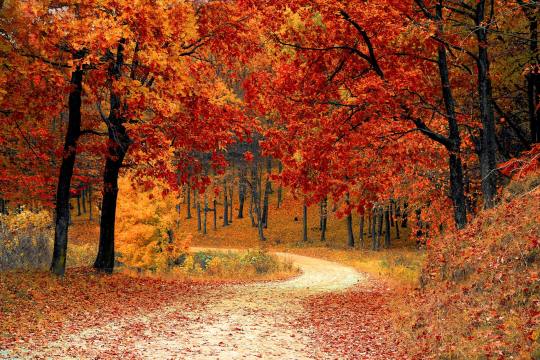
The Biological Rhythm of Trees
Trees, akin to humans, undergo cycles of activity and rest. During the warmer months, the green chlorophyll pigment in their leaves harnesses sunlight for photosynthesis, producing essential sugars and carbohydrates. As winter approaches, signaled by shorter days and falling temperatures, trees begin to conserve resources. Chlorophyll production ceases, revealing other pigments that give leaves their fall hues.
However, as climate change extends the warmth of the season, trees might not get the signals they need to start this conservation process in time, which can affect their nutrient storage and overall health.
The Ecological Ripple Effect
Climate change’s influence on trees isn’t merely aesthetic. Trees play a critical role in mitigating the effects of climate change, acting as vital carbon sinks. Their reduced efficacy, due to disrupted growth-rest cycles, could mean less carbon dioxide is absorbed from the atmosphere, further exacerbating the greenhouse effect.
Furthermore, regional shifts in tree populations might change the very essence of autumn. Some tree species, like the sugar maples known for their radiant red leaves, might migrate northward in search of cooler climates. Consequently, the rich tapestry of fall colors that regions like New England are famed for could alter dramatically.
Economic Impacts and the Human Connection
The late onset of fall colors and potential changes in the vibrancy of foliage could have a considerable impact on local economies. Regions that heavily rely on fall tourism might see a decline in visitors, affecting local businesses and employment.
Yet, beyond economics, fall represents a deep-seated connection many people feel with nature. Witnessing the stark changes in this cherished season might be the wake-up call that mobilizes more individuals to champion for stronger environmental protection measures.
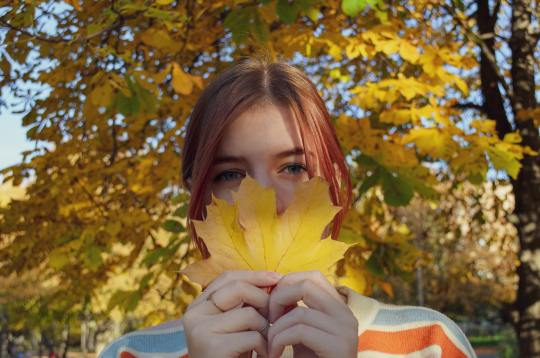
Concluding Thoughts
The changing hues of autumn serve as a vivid reminder of the broad-reaching effects of climate change. As scientists and researchers delve deeper into understanding these impacts, one thing becomes clear: The once predictable patterns of nature are becoming increasingly uncertain. As we marvel at the fall foliage, it’s crucial to remember that these colors are not just a spectacle but also a signal — a reminder of the delicate balance of our planet and the urgent need for sustainable action.
©eco-guardians.org
9 notes
·
View notes
Photo

There in a flash: A weird star produced the fastest nova on record Astronomers are buzzing after observing the fastest nova ever recorded. The unusual event drew scientists’ attention to an even more unusual star. As they study it, they may find answers to not only the nova’s many baffling traits, but to larger questions about the chemistry of our solar system, the death of stars and the evolution of the universe. The research team, led by Arizona State University Regents Professor Sumner Starrfield, Professor Charles Woodward from University of Minnesota and research scientist Mark Wagner from The Ohio State University, co-authored a report published today in the Research Notes of the American Astronomical Society. A nova is a sudden explosion of bright light from a two-star system. Every nova is created by a white dwarf — the very dense leftover core of a star — and a nearby companion star. Over time, the white dwarf draws matter from its companion, which falls onto the white dwarf. The white dwarf heats this material, causing an uncontrolled reaction that releases a burst of energy. The explosion shoots the matter away at high speeds, which we observe as visible light. The bright nova usually fades over a couple of weeks or longer. On June 12, 2021, the nova V1674 Hercules burst so bright that it was visible to the naked eye — but in just over one day, it was faint once more. It was like someone flicked a flashlight on and off. Nova events at this level of speed are rare, making this nova a precious study subject. “It was only about one day, and the previous fastest nova was one we studied back in 1991, V838 Herculis, which declined in about two or three days,” says Starrfield, an astrophysicist in ASU’s School of Earth and Space Exploration. As the astronomy world watched V1674 Hercules, other researchers found that its speed wasn’t its only unusual trait. The light and energy it sends out is also pulsing like the sound of a reverberating bell. Every 501 seconds, there’s a wobble that observers can see in both visible light waves and X-rays. A year after its explosion, the nova is still showing this wobble, and it seems it’s been going on for even longer. Starrfield and his colleagues have continued to study this quirk. “The most unusual thing is that this oscillation was seen before the outburst, but it was also evident when the nova was some 10 magnitudes brighter,” says Wagner, who is also the head of science at the Large Binocular Telescope Observatory being used to observe the nova. “A mystery that people are trying to wrestle with is what’s driving this periodicity that you would see it over that range of brightness in the system.” The team also noticed something strange as they monitored the matter ejected by the nova explosion — some kind of wind, which may be dependent on the positions of the white dwarf and its companion star, is shaping the flow of material into space surrounding the system. Though the fastest nova is (literally) flashy, the reason it’s worth further study is that novae can tell us important information about our solar system and even the universe as a whole. A white dwarf collects and alters matter, then seasons the surrounding space with new material during a nova explosion. It’s an important part of the cycle of matter in space. The materials ejected by novae will eventually form new stellar systems. Such events helped form our solar system as well, ensuring that Earth is more than a lump of carbon. “We're always trying to figure out how the solar system formed, where the chemical elements in the solar system came from,” Starrfield says. “One of the things that we're going to learn from this nova is, for example, how much lithium was produced by this explosion. We're fairly sure now that a significant fraction of the lithium that we have on the Earth was produced by these kinds of explosions.” Sometimes a white dwarf star doesn’t lose all of its collected matter during a nova explosion, so with each cycle, it gains mass. This would eventually make it unstable, and the white dwarf could generate a type 1a supernova, which is one of the brightest events in the universe. Each type 1a supernova reaches the same level of brightness, so they are known as standard candles. “Standard candles are so bright that we can see them at great distances across the universe. By looking at how the brightness of light changes, we can ask questions about how the universe is accelerating or about the overall three-dimensional structure of the universe,” Woodward says. “This is one of the interesting reasons that we study some of these systems.” Additionally, novae can tell us more about how stars in binary systems evolve to their death, a process that is not well understood. They also act as living laboratories where scientists can see nuclear physics in action and test theoretical concepts. The nova took the astronomy world by surprise. It wasn’t on scientists’ radar until an amateur astronomer from Japan, Seidji Ueda, discovered and reported it. Citizen scientists play an increasingly important role in the field of astronomy, as does modern technology. Even though it is now too faint for other types of telescopes to see, the team is still able to monitor the nova, thanks to the Large Binocular Telescope’s wide aperture and its observatory’s other equipment, including its pair of multi-object double spectrographs and exceptional PEPSI high resolution spectrograph. They plan to investigate the cause of the outburst and the processes that led to it, the reason for its record-breaking decline, the forces behind the observed wind, and the cause of its pulsing brightness. IMAGE....Illustration of an intermediate polar system, a type of two-star system that the research team thinks V1674 Hercules belongs to. A flow of gas from the large companion star impacts an accretion disk before flowing along magnetic field lines onto the white dwarf. Illustration by Mark Garlick
260 notes
·
View notes
Text

Polin 146 aesthetics project, Prompt #118 this one was picked by @songbird918
secret baby- (He doesn’t know she’s PG)
Dear reader, everyone knows how some scandals are covered. Rich lord has a favorite daughter, she comits an indiscretion, rich lord finds someone to marry her, they go away to the countryside and a year later the husband coincidentally dies, giving freedom for the grieving widow to return home with an entirely legitimate newborn baby. Fortunately for the Featheringtons this is not what happened to their beloved Penelope. Sources confirm that this widowed young mother has nothing to hide except her grief for the tragic carriage accident of the deceased Mr Valois. This author for one, mourns the lack of gossip. But won't intrude on the poor girl's misfortune.
-lady Whistledown
Penelope Valois nee Featherington can count herself fortunate on two accounts, one, that cousin Jack values her business accumen more than he values any gossip about her. And two, that her beautiful baby was born a perfect carbon copy of herself. And doesn't look one ounce like a Bridgerton. (If Athy's red hair is closer to Daphne's shade than Penelope's, well that's a coincidence!)
When Penelope fell into Colin's arms that fateful night he tried to apologize for renderings her unmarriageable in the eyes of the ton, she knew that should worse come to worse she be on her own. But it still hurts to know he was such a coward. And while she doesn't blame him for the consequences. she does blame him for leaving.
Enter Colin Bridgerton, back from Italy for the season, coming face to face with the woman he loved and left in a fit of guilt and inmaturity the year before. Nursing an ember of hope to win her back. Even if he has to spend the rest of his life groveling. Penelope looks even more beautiful than ever and her little daughter is an adorable hungry troublemaker. All he wants is to be forgiven. But he might as well be dead to her
Between Lady Whistledown's revival and Agatha Violette's (Athy's) paternity. Penelope's life couldn't have more secrets. Following her around might have led to Colin discovering the first secret and she knows he'd be furious if he knew the lengths Penelope went to protect Athy's legitimatacy and deny him his rights as father. But he won't find out, she will continue in denial, running from her feelings and the problems they created has worked so far.
Colin knows that Penelope may still love him, but can she forgive him and give him another chance? Could he ever earn her trust again? Especially when he's realizing that while he thought Penelope incapable of deception, Lady Whistledown wouldn't bat an eyelash at paying for the alteration of a birth certificate.
And Athy does look suspiciously old for a baby that's supposed to be a newborn.
#not my favorite trope#bridgerton#polin#pregnancy au#penelope x colin#Penelope Featherington#colin bridgerton
138 notes
·
View notes
Photo

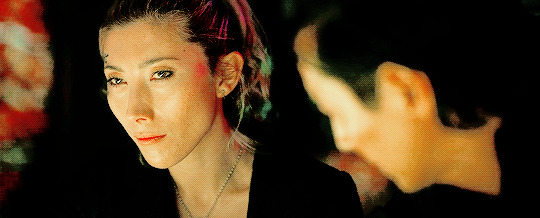

altered carbon screencaps
season one.
available for anyone who wants to use them for edits / graphic making. as always credit is absolutely not required but is super appreciated. the resolution of these screencaps is 1920x1080. folders have been split into episodes for easier downloads.
screencap navigation masterlist. / ko-fi.
19 notes
·
View notes